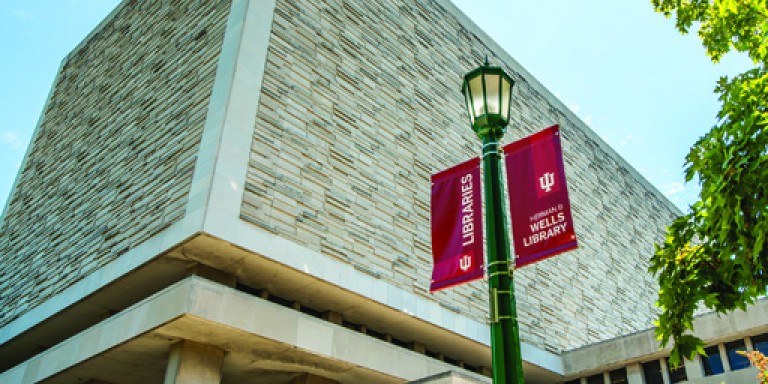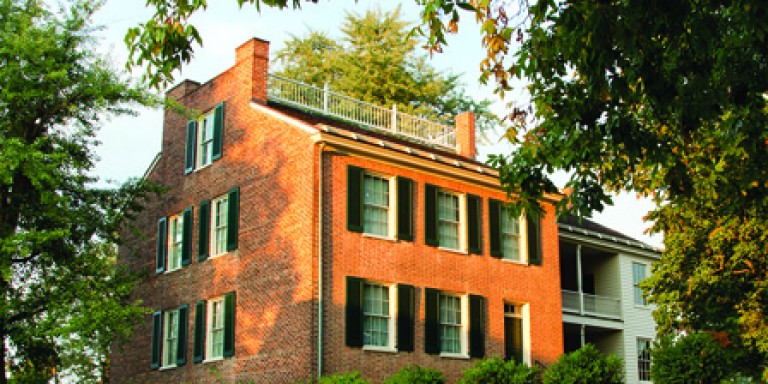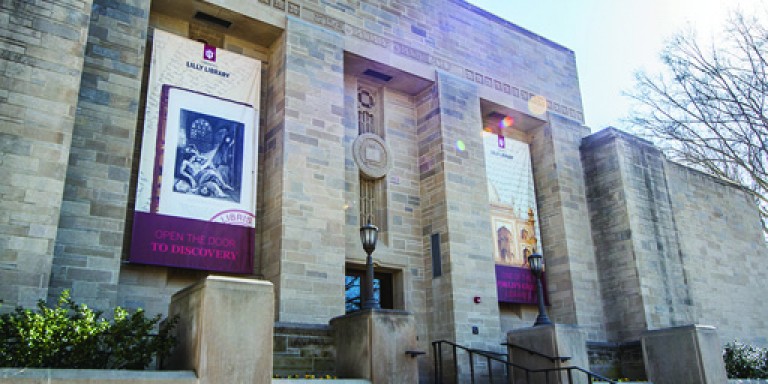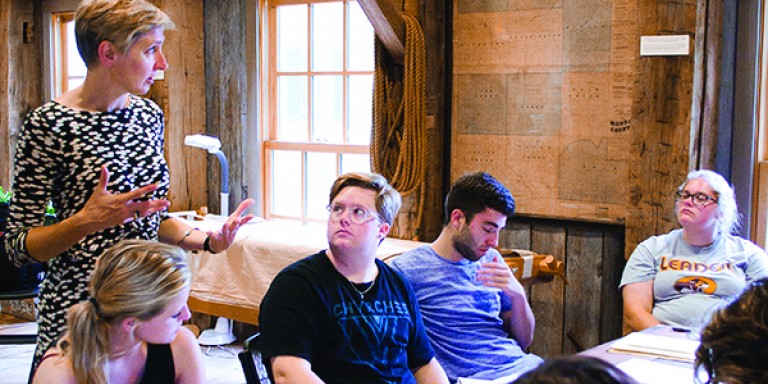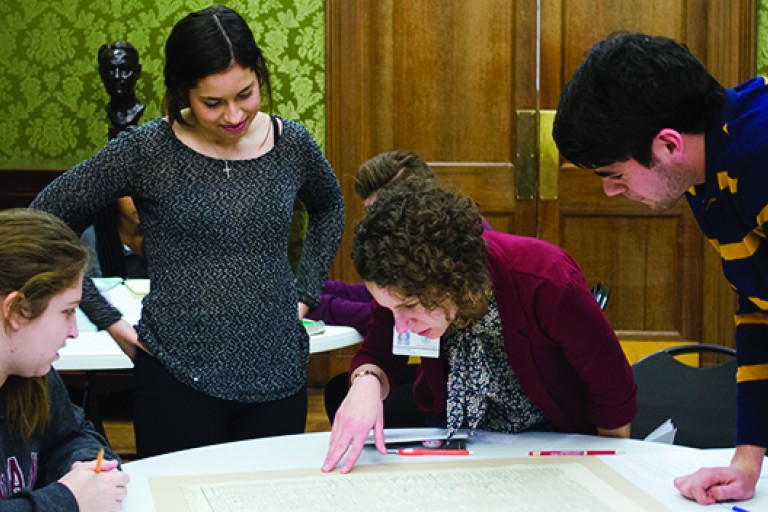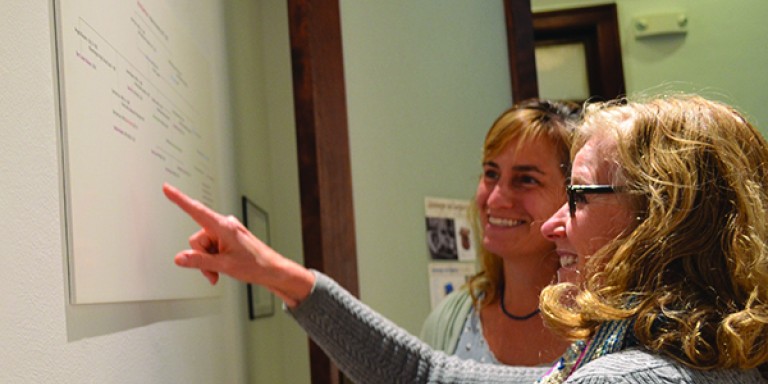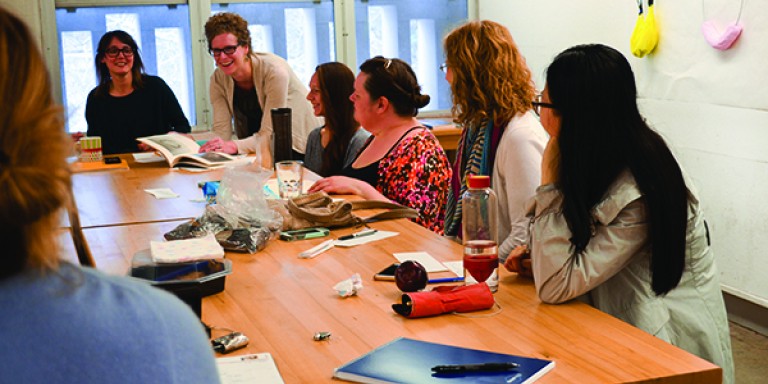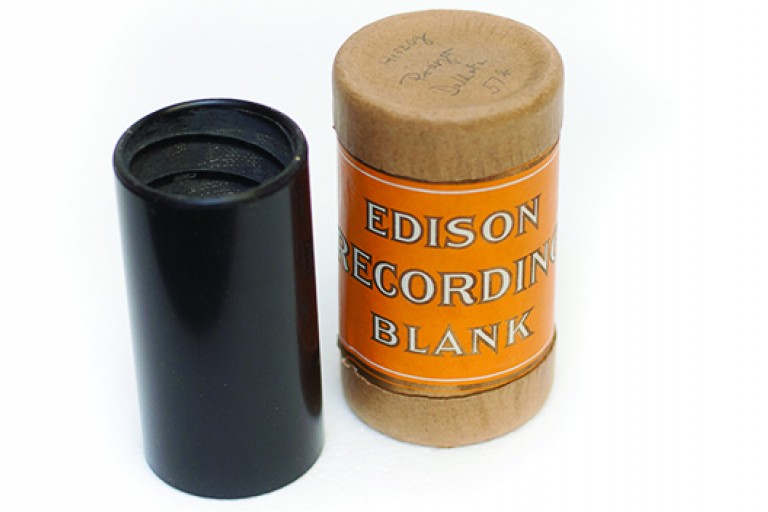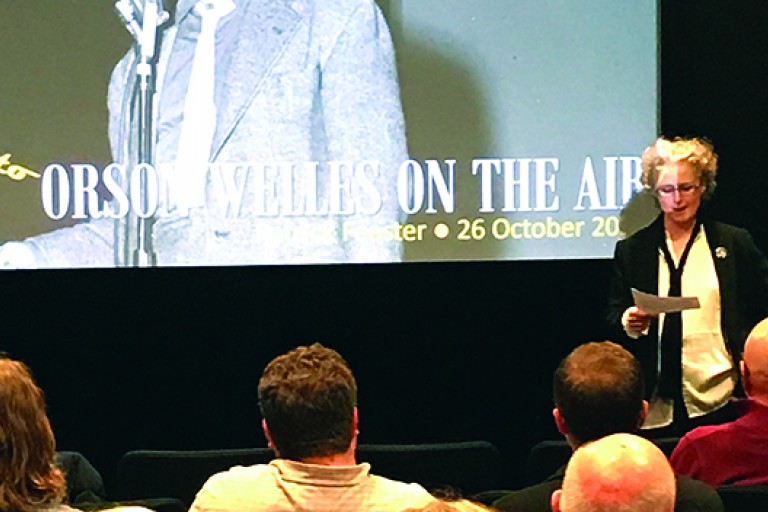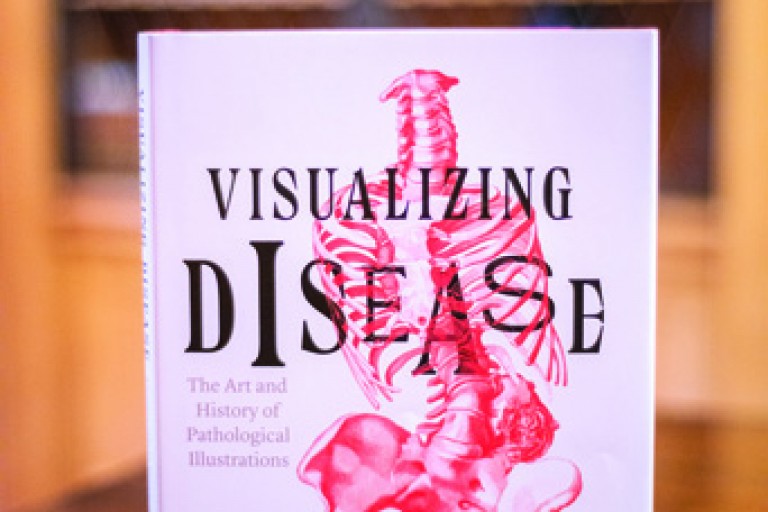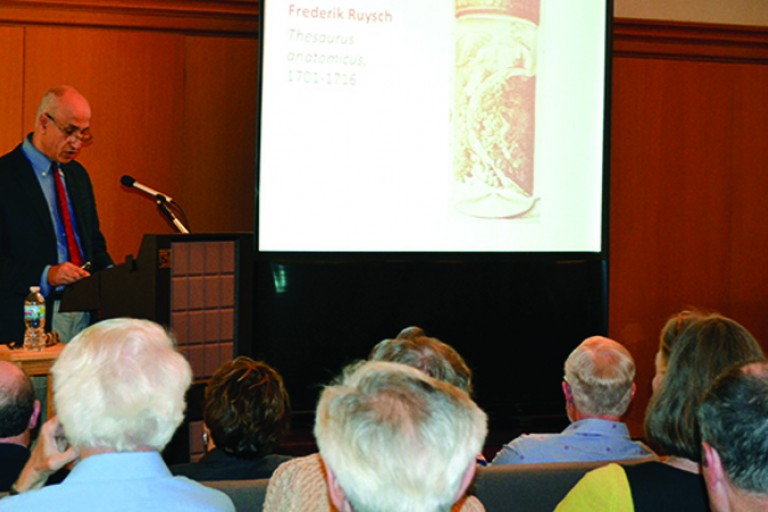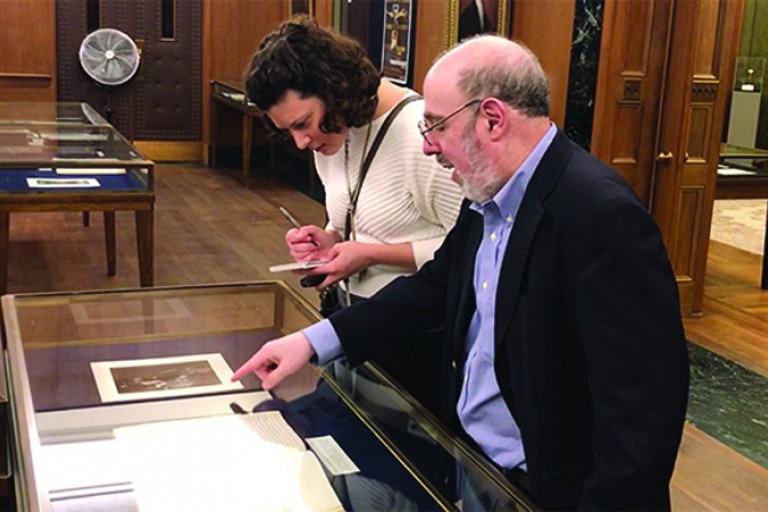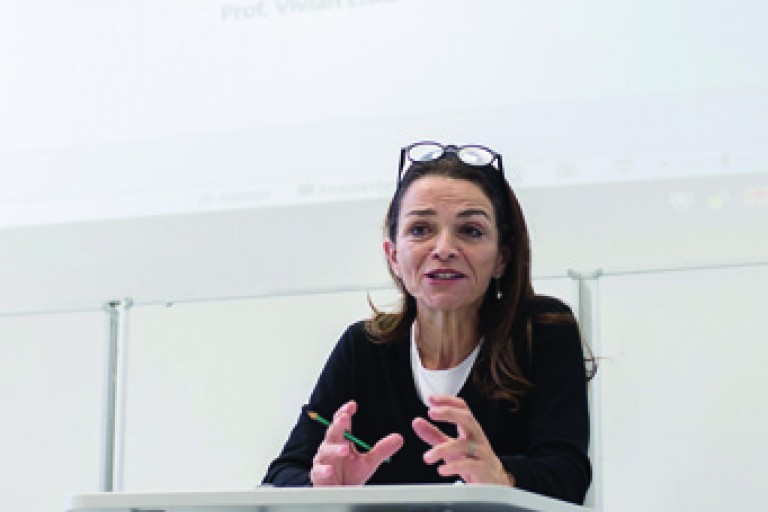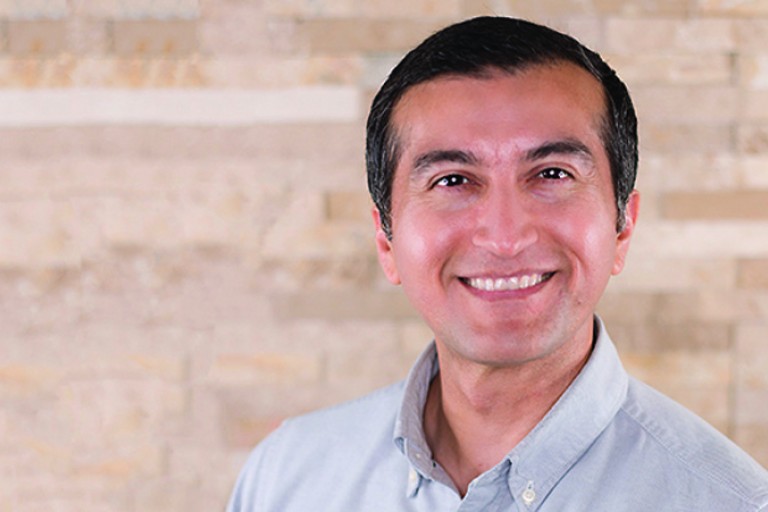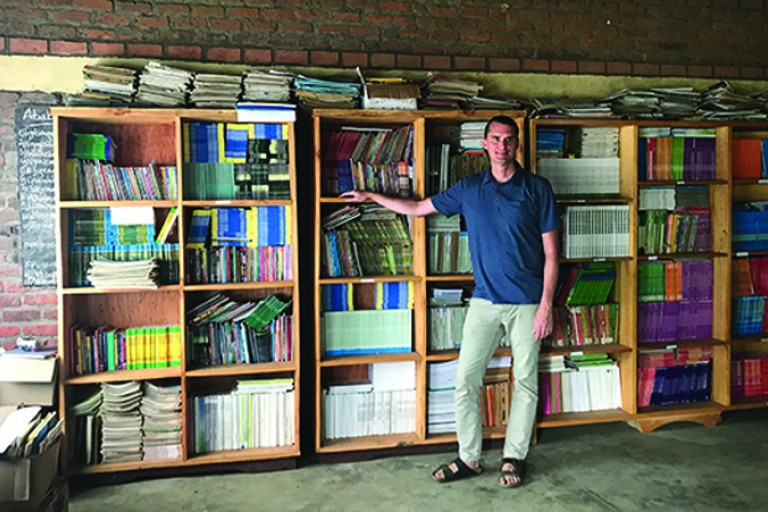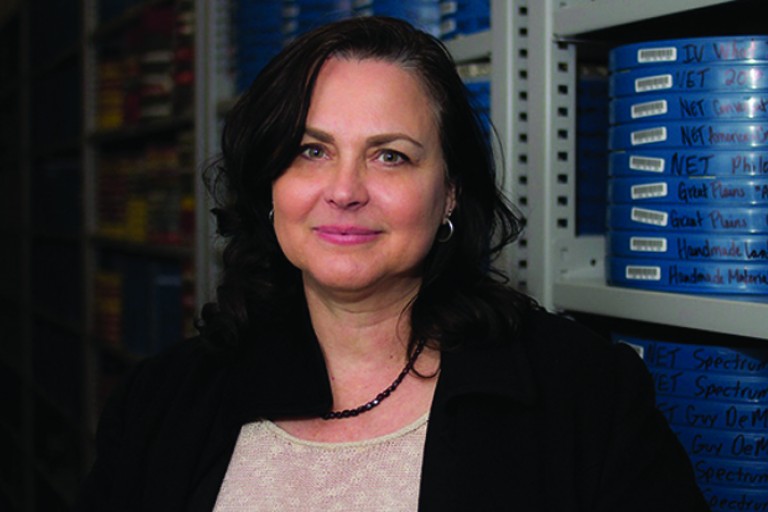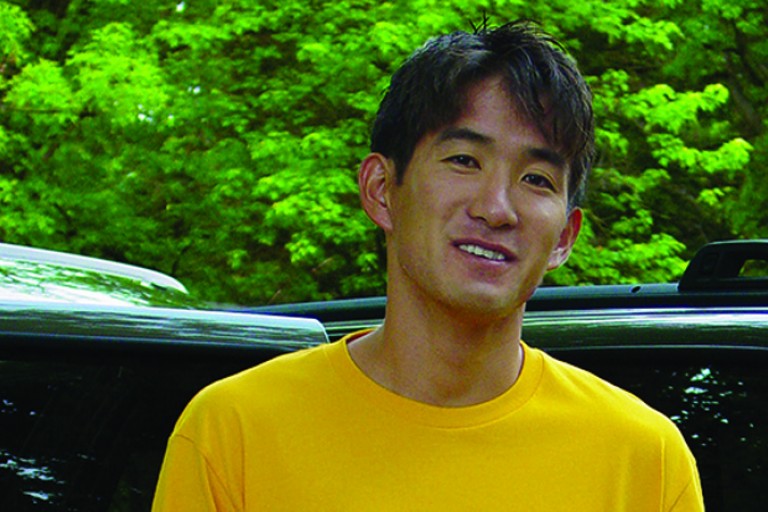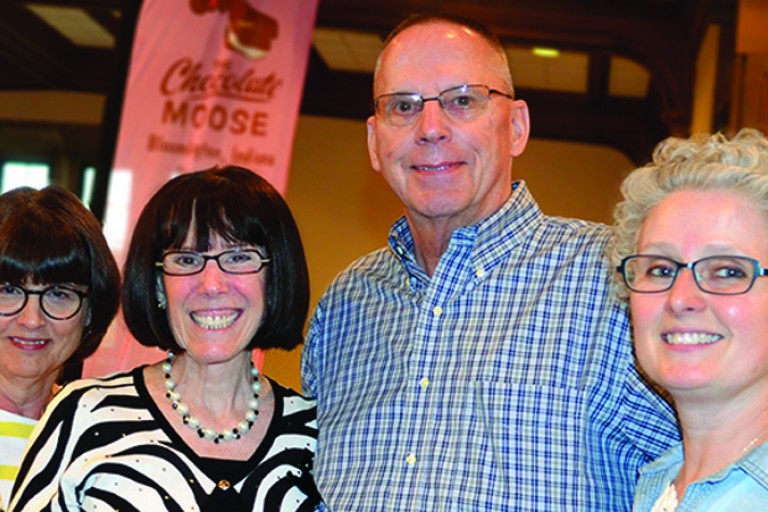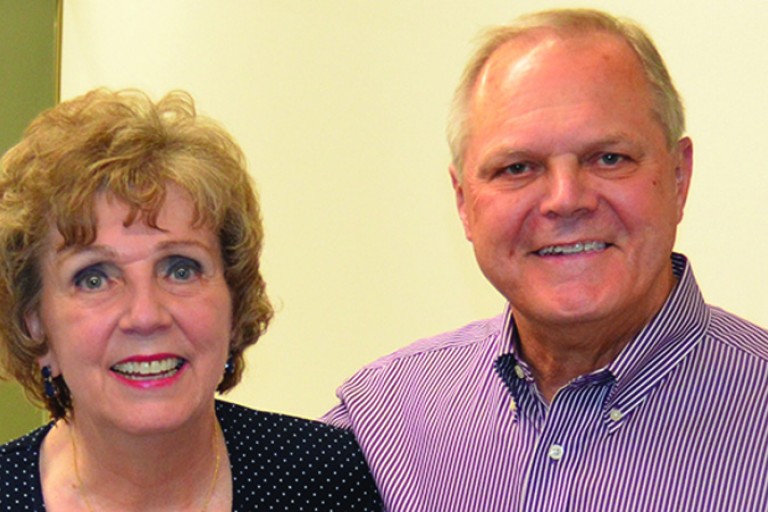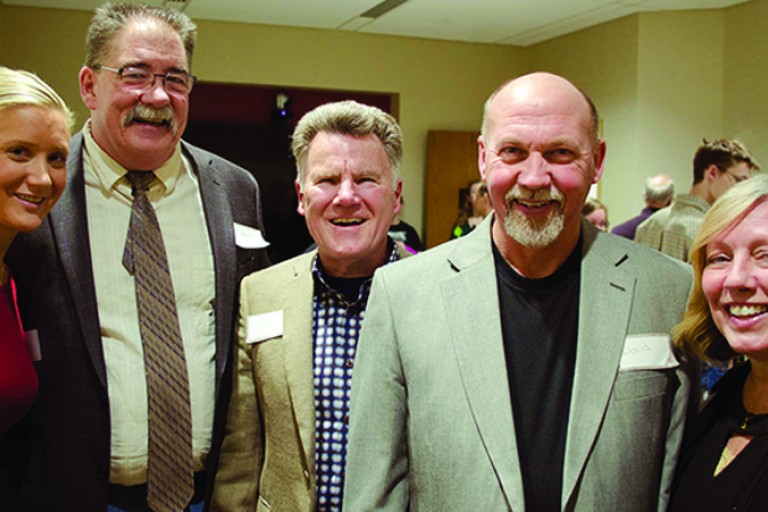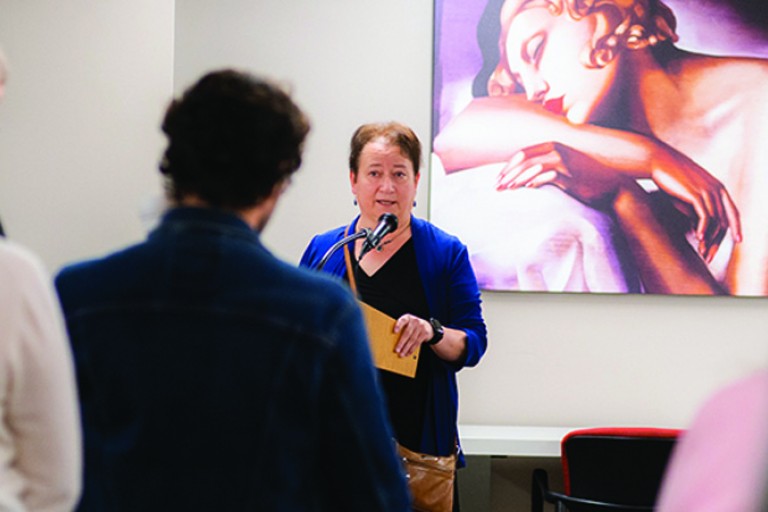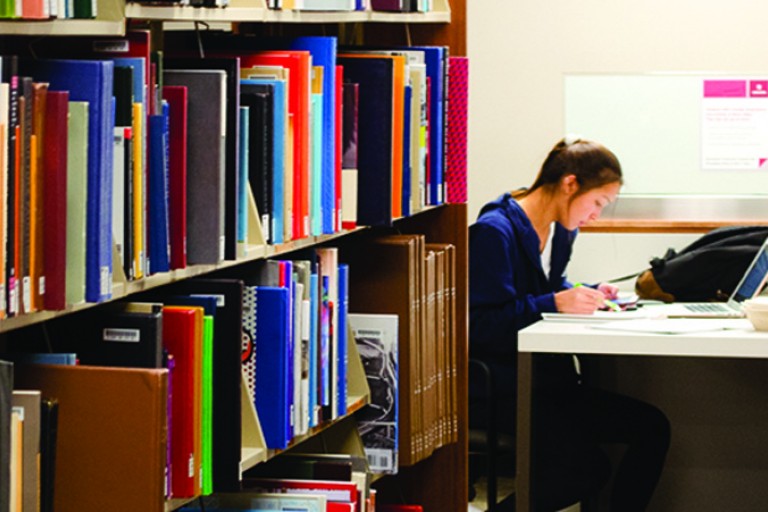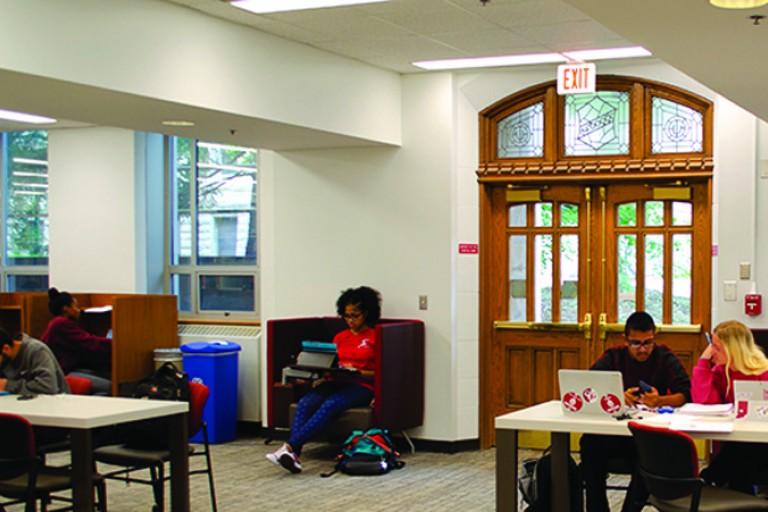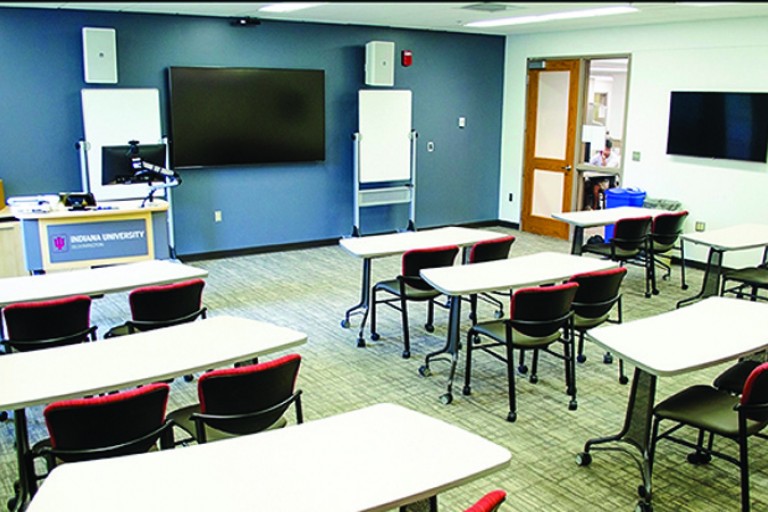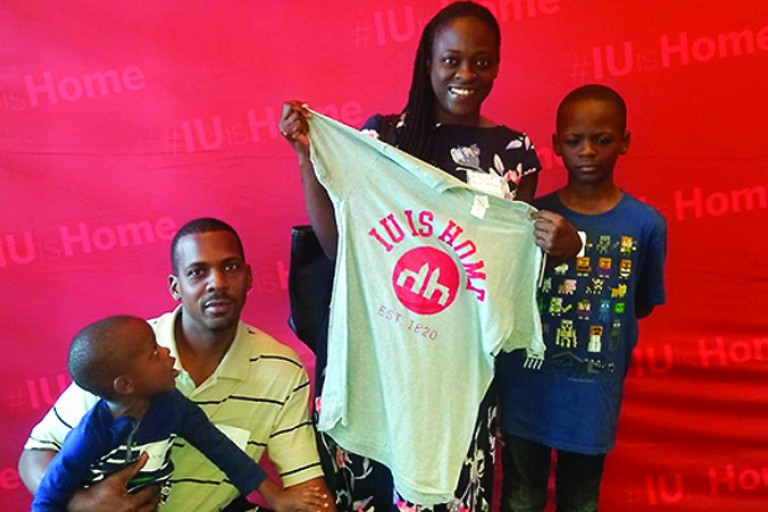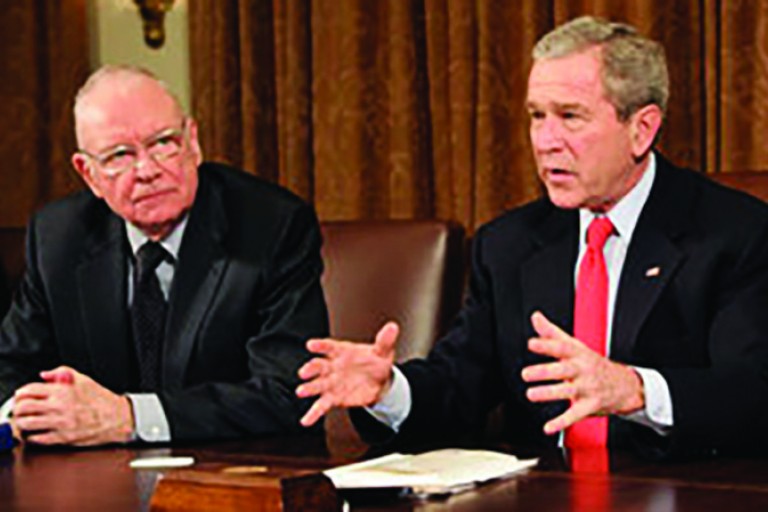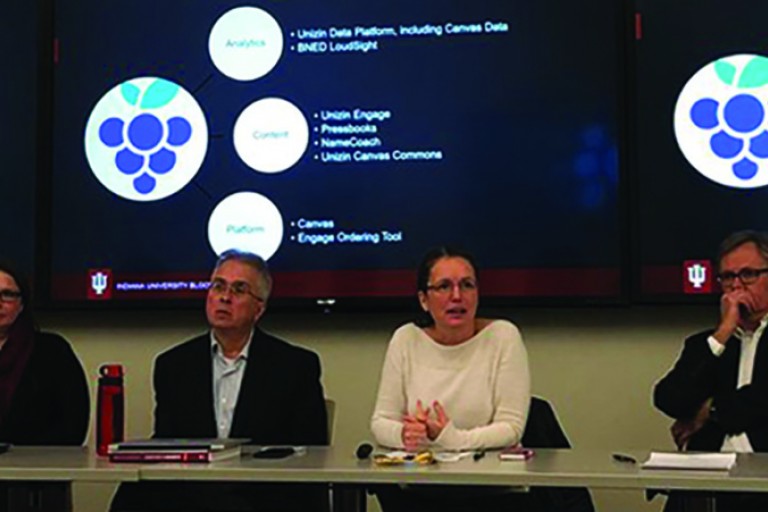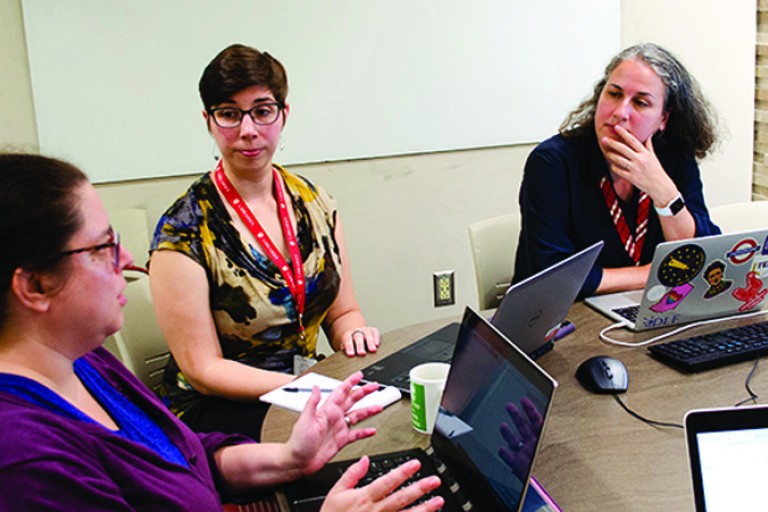Our Annual Report offers stories organized around our IU Libraries strategic plan—it was developed to cascade from strategic plans at the university and campus levels.
Scroll down to read each section and story in sequence or use the Table of Contents to navigate.
Other ways to view this report: We also offer a single-page PDF for print and read capabilities, as well as a page-turning option. Print copies are gladly shared - simply send your request to libcomm@indiana.edu. You may also view or print a copy of the Strategic Plan guiding our work and this Annual Report.
Table of Contents
Who we are
IU Libraries is your destination for discoveryMessage from the Dean
Carolyn Walters is the Ruth Lilly Dean of LibrariesAn Excellent Education
Primary sources inspire faculty and studentsExcellence in Research with MDPI
Digitizing film multiplies accessExcellence in Research with Lilly Library
Advancing the frontiers of knowledgeInternational Dimension of Excellence
IU Press leader with Studies in AntisemitismExcellence in Advancement
Remembering Sam BurgessBuilding for Excellence
Optimized, centralized facility conserves collections of distinctionThe Centrality of Information
Dynamic information exchangeIU Libraries At-a-Glance
Graphs report facts and figuresIU Libraries: Destinations for Discovery
Three library fires—in 1854, 1883, and 1969—did not daunt us. Through wars, recessions, and the birth of the internet, we have collected and protected a legacy of knowledge. Our materials are digital, visual, audio, and print. They are curated from our campuses, our country, and our world. As a result, they are in 450 different languages, world-renowned, and ready to connect students with limitless possibilities. Our partnership with University Information Technology Services (UITS) to complete the Media Digitization Preservation Initiative (MDPI) is one of the country’s most ambitious academic audio, video, and film digitization preservation projects to date.
We are experts on copyright, preservation, open access publishing, digital collection management, statistics, geographic information systems, textmining, and all the technologies we find worthy of your work. We have been collecting the greatest ideas for 200 years. We are ready to inspire yours.
Herman B Wells Library | 1320 E. Tenth Street
With its double towers of Indiana limestone, this iconic structure is the visual center of IU Libraries and offers 24-hour access. Two million annual visits make this one of the most heavily used academic spaces on the Bloomington campus.
Wylie House Museum | 307 E. Second Street
Home to Indiana University’s first president, this 1835 structure is one of Bloomington’s oldest homes and open to the public through free guided tours.
Lilly Library | 1200 E. Seventh Street
A preeminent rare book and manuscript library known around the world, the Lilly Library is centrally located on the university’s Fine Arts Plaza and offers over 8 million manuscripts, 150,000 pieces of sheet music, 30,000 mechanical puzzles, and 450,000 books.
Additional destinations from IU Libraries:
Message from the Dean
There’s a street-level window in the office for our Head of Scholars’ Commons. It’s a lucky place to observe the energy of countless students zig-zagging their way to class or study. Even better, Jordan Avenue is right outside, and it’s part of two different campus bus routes, providing the occasional thrill as a certain vehicle goes by.
I feel the same way about looking at this annual report. Below we feature our largest and loudest library outreach to date—a campus bus encouraging all of its travelers to Turn Up the Volume with the IU Libraries.
Whether its rolling by one of our destinations for discovery or collecting students from the Memorial Union, our bus project proclaims our intent to inspire excellent work. It asks our faculty and students to consider how their good work can be amplified into something great by utilizing our people, places, and collections. And, importantly, it celebrates what a prolific, supported library can do when it is populated by extraordinary staff working together with a shared direction.
In these pages find stories of that vision organized around our IU Libraries strategic plan—it was developed to cascade from strategic plans at the university and campus levels. We can only share a few of our favorite moments, but behind each one are dozens more. As I reflect on this, I am appreciative of the evident support from our campus community. Throughout my 30 years of service at Indiana University, I have seen many changes in academic libraries nationwide. Here, we have always been at the forefront of possibilities—never wavering in our role as dynamic ambassadors of knowledge, learning, and discovery.
So, I celebrate all of the donors who have supported our mission these many years. I salute our academic leaders who make it possible for our library to thrive. I congratulate all of our academic partners on our mutual successes. And to all of you who work with me at IU Libraries every day —I sincerely thank you for adding your voice as we Turn Up the Volume.
Carolyn Walters,
Ruth Lilly Dean of University Libraries
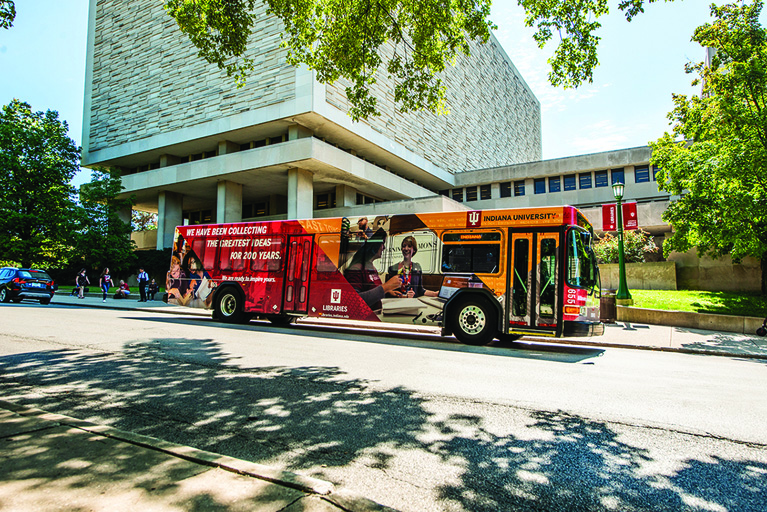
Whether its rolling by one of our destinations for discovery or collecting students from the Memorial Union, our bus project proclaims our intent to inspire excellent work.
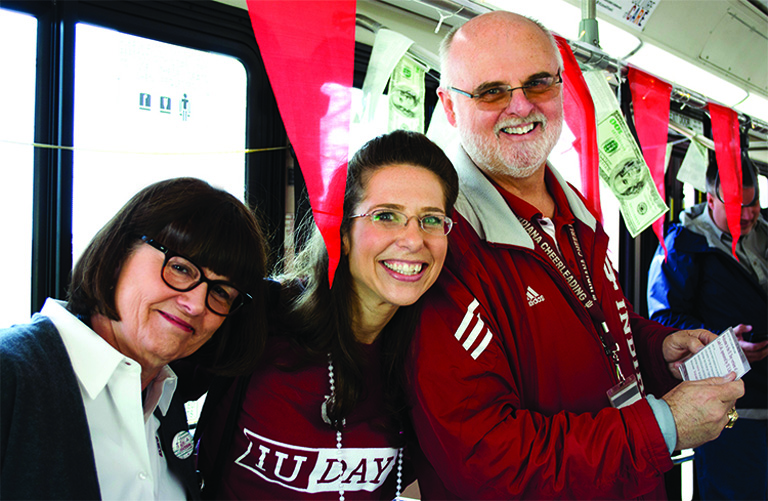
April 18 was IU Day in 2018 and Dean Walters (left) spent it riding the A route through the heart of Indiana University’s campus. Between surprising students with fun trivia and sharing IU Libraries’ practical application of its teaching, learning, and research mission with reporters, she paused for a photo break with fellow conspirators Director of Communications, Michelle Crowe (center) and Assistant Athletic Director for Facilities, Chuck Crabb (right) who volunteered as game show host.
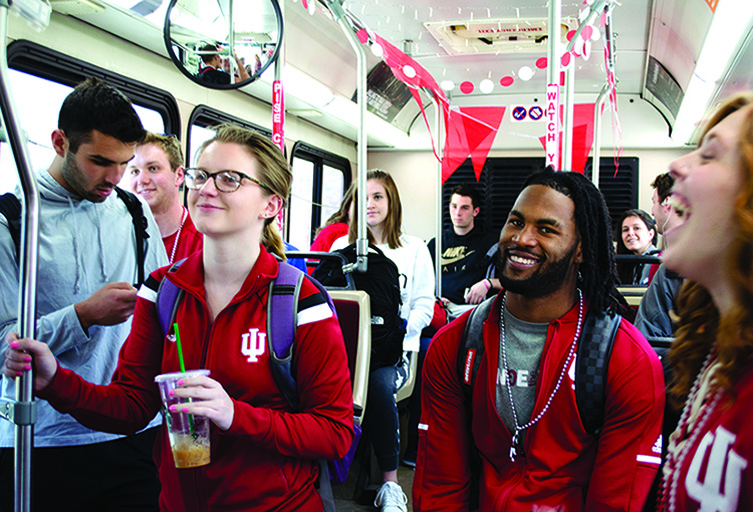
IU Libraries went mobile on IU Day 2018. Library leaders rode along campus bus 655 to host a Cash-Cab inspired trivia game. The surprised riders answered questions about IU to win prizes, applause, and social media fame.
An Excellent Education
IU Libraries contributes to an excellent education for students of Indiana University by partnering with faculty and instructors in nationally recognized areas such as information literacy and primary source integration. We are champions of our student researchers at undergraduate and graduate levels.
Believing an excellent education must foster appreciation of diversity, we direct our resources to comprehensive collections, then offer articles, events, and exhibitions to increase their visibility.
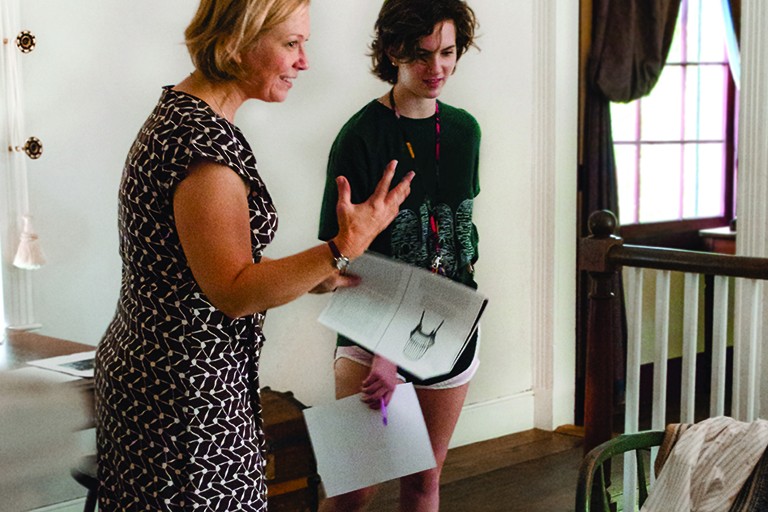
IU Libraries Strategic Plan Core Goal 1
It’s very warm in the second-story, airless bedroom. There is no air conditioning, of course, because thanks to careful restoration by IU Libraries, Wylie House Museum welcomes visitors to the year 1840. Carey Beam, director, stands next to a bed prepared for a typical 1800s home birth and explains the closed windows—a standard precaution of the time to keep dust and flies out and give laboring women privacy. Meanwhile, other students are poring over letters and photos from the women who lived at the house and gave birth inside it. It’s all part of IU Professor Sarah Knott’s History of Motherhood class, and, thanks to partnership with IU Libraries, it’s just one of the many ways her students are experiencing an excellent education.
Through a three-day-long workshop inaugurated in 2017, librarians and archivists introduce professors to practical ways of incorporating special collections into their courses. Funded by the transformational Jay Informational Literacy Grant Program and the IU Office of the Bicentennial, faculty explore collections and see firsthand how interacting with primary sources increases interest and retention of knowledge.
With help from librarians at the workshop, Knott arranged her course around four visits to campus special collections. Students examined rare books and manuscripts at the Lilly Library; experienced the Wylie House Museum; conducted research at the Kinsey Institute; and explored documentation of IU’s early 20th Century Department of Home Economics Practice House at University Archives.
"This is the best program I have participated in since arriving at IU. I was struck by the commitment of the librarians and the archivists to serve as an additional tier of faculty.”
—Sarah Knott, associate professor, IU Department of HistoryKnott and class investigate archived firsthand accounts of maternity at Wylie House as an immersive part of her class on the History of Motherhood.
Primary sources are also inspiring students in The Media School. Here Lilly Library Public Services Librarian Isabel Planton discusses the history of printing through the Jonathan Krause Rare Newspaper and Magazine Collection.
Nicole Jacquard, Metalsmithing + Jewelry Design professor, inspired students through the Alma Eikerman papers at University Archives. The resulting work was celebrated through the Lineage as Legacy community art exhibition.
Classroom visits by Carrie Schwier, Outreach and Public Services Archivist, demonstrate not only the deep interest Jacquard’s metalsmith students formed for the Eikerman papers, but also the power of archives to inspire new work.
Excellence in Research with MDPI
Quality research collections consist of many materials in addition to books, journals, and manuscripts—film, born-digital and digitized library collections of all sorts, open web resources, heritage institution collections, and collaborative collections at a the grandest of scales. Consider the HathiTrust and its 140 academic partners—including IU Libraries—who together share 16,714,320 digitized volumes with the world. It’s just one way IU Libraries ensures excellence in research by responding to the exciting changes and challenges here on campus and around the world.
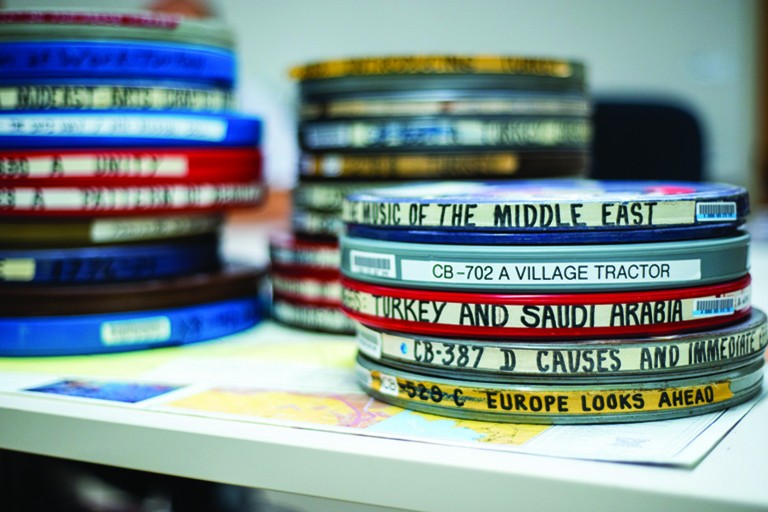
IU Libraries Strategic Plan Core Goal 2
Aysehan Jülide Etem discusses the concept of documentary diplomacy with the earnest zeal of a doctoral candidate deeply engaged in discovery. A media scholar, Etem is using films to write media histories. For her dissertation she narrowed that focus to Turkey, her home country. With more than 120,000 items, IU Libraries Moving Image Archive had much to offer, including 24 films Etem screened in their original formats with help from IU Libraries film archivists.
Her start at IU led to more cinematic searching, including archives in Turkey, Norwegian historians, and the National Archives. To her surprise, she uncovered three purposely different versions of a film she first viewed at IU. Suspecting she had a case of documentary diplomacy in action, Etem needed to make comparisons of the differently dated films to confirm. No longer in Bloomington, she turned to her IU research resources.
“The library basically provided all these possibilities,” Etem said. “First, they preserved the film and had facilities for me to watch it in its original format. When I needed it again, they requested digitization and sent it to me electronically. Then, when I wanted to talk about it at a conference, the library projected it in their wonderful screening room.”
Digitizing film multiplies access, introducing new possibilities that transform research. Announced by IU President Michael A. McRobbie in 2013, the Media Digitization and Preservation Initiative will provide digital access to all significant audio, video, and film recordings by the IU Bicentennial in 2020. As co-leader in this ambitious state-wide project, IU Libraries is a daily witness to its powerful impact in research and teaching. As of summer 2018, 1,700 hours of film have been digitized. In total, MDPI has preserved 308,706 items digitally.
"What IU is doing is at a very different level—a very high level. It does not exist in other places. Not in Turkey, and not at the National Archives."
—Aysehan Jülide Etem, PhD candidate, IU Media SchoolFilmmaker, media scholar, and IU doctoral candidate Aysehan Jülide Etem is pictured on set. Political Animals, her acclaimed documentary about political protest in her native Turkey, was screened at IU Cinema as part of the 8th annual Iris Film Festival.
Etem engages with other film scholars at Visible Evidence, an international documentary film conference where she presented her film research and screened A Village Tractor in the IU Libraries Screening Room.
Thanks to a grant by the National Endowment for the Humanities, IU is digitally preserving 7,000 wax cylinders held at IU Libraries’ Archives of Traditional Music. Of these, a 1928 collection of cylinders featuring Yanktonai Dakota singers was added to the 2017 National Recording Registry.
At an IU Libraries Screening Room celebration, Lilly Library‘s Associate Director Erika Dowell unveiled Orson Welles on the Air. The online listening library offers nearly 600 digitized broadcast recordings and scripts (orsonwelles.indiana.edu).
Excellence in Research with Lilly Library
We advance the frontiers of knowledge through rich research collections. These are the raw materials scholars use to master deep understanding of their topics and explore new conclusions, connections, and insights. Materials at the Lilly Library, the Moving Image Archive, University Archives, the William and Gayle Cook Music Library, and esteemed collections in area studies, maps, literature, and fine arts have been actively collected and conserved. To inspire access to these complex collections, librarians and specialists assume enhanced roles as partners, instigators, and collaborators.
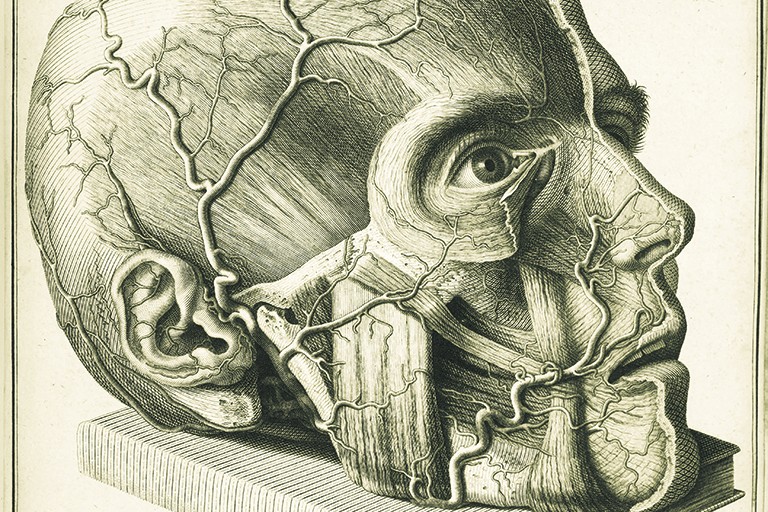
IU Libraries Strategic Plan Core Goal 2
One review of Visualizing Disease called it “a work that was crying out to be written” (Russell Maulitz, MD-PhD). Imagine, then, books sitting in expectation at the Lilly Library, waiting impatiently for inspired researchers to tell their tales.
The Bushong-Beasley Antiquarian Dermatology Collection, and other similar volumes, found their voice through IU professor Domenico Bertoloni Meli. His work began in astonishingly uncharted territory, led forward by Lilly Library materials he characterizes as indispensable.
Published in 2017 by The University of Chicago Press, Visualizing Disease was quickly acclaimed for opening a new field of inquiry related to visual representation of diseased states. Supported by a New Frontiers Award and a College of Arts and Humanities Institute grant, Dr. Bertoloni Meli traveled across Europe and North America to delve into the wide range of figures involved in the early representation of disease, including not just medical practitioners but also draftsmen and engravers.
In Bloomington, the Lilly Library was a critical link throughout his multiple years of study—between well-informed collectors such as Drs. Rebecca Bushong and Charles Beasley, rare book librarians, and experts from the Department of Art History, IU School of Medicine, and Eskenazi Museum of Art. In 2013, the Lilly Library hosted a first-of-its-kind exhibition focused on early illustrations of disease, curated by professor Bertoloni Meli and celebrated by historians, medical practitioners, and artists around the county.
Joel Silver, director of the Lilly Library, explains the significance and interest. “Visualizing Disease sheds light on aspects of medical history not previously explored academically, as well as on the development of book illustration and the history of printing,” he said.
Image information: Flayed head from Antonio Scarpa’s Saggio di osservazioni e d’esperienze sulle principali malattie delgi occhi (Sample of Observations and Experiences on the Main Diseases of the Eyes). Pavia: Baldassare Comino, 1801.
"For its completeness, maybe there is no collection superior to the Bushong-Beasley. It is certainly at the very top of the field.”
—Domenico Bertoloni Meli, professor, IU Department of History and Philosophy of Science and MedicineDomenico Bertoloni Meli, Visualizing Disease: The Art and History of Pathological Illustrations. Chicago: The University of Chicago Press, 2017.
Dr. Bertoloni Meli opens Lilly Library’s 2013 Visualizing Disease exhibition with an in-depth look at the early illustrations of disease that proved integral to his many years of research.
Lilly Library continues its commitment to research for everyone. Exhibitions both explore collections and make connections. Here, Director Joel Silver gives a personal tour of 2017’s Ian Fleming-focused exhibition to a reporter from the Indianapolis Star. The resulting article exposes Lilly Library to researchers state-wide.
At the Herman B Wells Library, IU Libraries holds 4,000 Soviet military topographic maps captured during WW2. A recent digitization grant from the Council on Library and Information Resources is increasing international access to this collection.
IU Libraries inspires excellent research by providing materials and expertise at cultural events. Here, Southeast Asian Studies Librarian Karen Farrell (right) and her student assistant await guests arriving to hear Sir Salman Rushdie lecture at IU Auditorium with a collection of literature ready for check out.
International Dimension of Excellence
When Dr. Rosenfeld reports “a coalition of very serious and capable scholars dedicated to getting people to understand antisemitism is developing,” he calls out the powerful impact of publishing. Recording knowledge and then persistently sharing it throughout the world instigates discussion, builds community, and moves us all forward. At IU Libraries, our respected librarians, internationally known collections, and IU Press publishing efforts all work together to advance the internationalization of Indiana University’s research contributions.
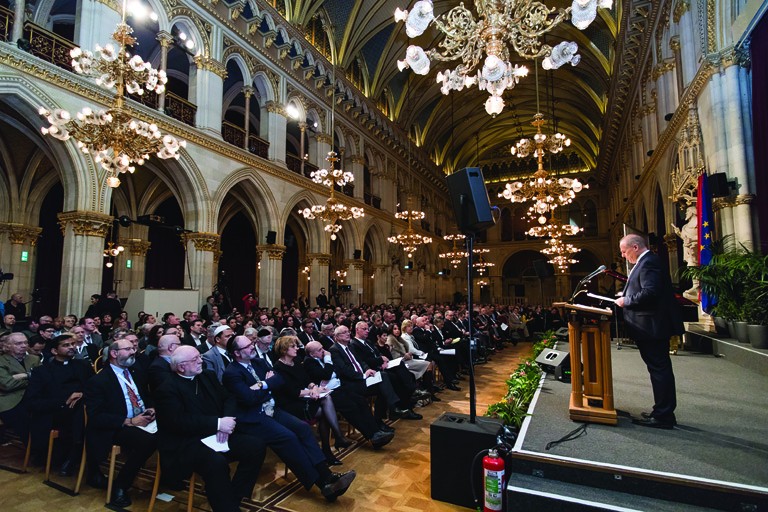
IU Libraries Strategic Plan Core Goal 3
Dee Mortensen didn’t expect to find herself speaking Spanish. After all, her IU Press-related travels brought her to Vienna, Austria. But the February 2018 An End to Antisemitism! international conference was not contained by any one language. India, Lithuania, Australia, and South America were just a few of the places attendees called home. Hundreds of scholars came to discuss what Alvin Rosenfeld, IU Press series editor for Studies in Antisemitism, described as an alarming global resurgence.
“Unfortunately, we are living in a time when antisemitism is once again on the rise,” he said. “We are not talking about a phenomenon restricted to any one place, because it is evident throughout the world there is a serious upsurge of hostilities against Jews.”
Declaring that “education has to be the primary way to engage in and address antisemitism,” Professor Rosenfeld partners with IU Press to imagine and sustain the well-received antisemitism series. With 10 titles in less than 10 years and many more on the way, it is perhaps the most ambitious book series on the topic, anywhere, he believes.
Also at IU Press, the Canadian Institute for the Study of Antisemitism publishes its peer-reviewed journal, Antisemitism Studies. Both of these synergistic efforts are noted for their scholarly rigor when discussing an emotionally charged topic, something Mortensen—representing the only US-based press in attendance at the conference—was able to discuss with many prodigious scholars.
She said, “I met many journalists, scholars, and activists who would have never had the opportunity to become acquainted with our books. I met the rising stars of this field. I am certain our work landed in the right hands, because I had the opportunity to introduce them to it.”
Caption of top photo: Dr. Armin Lange, Head of the Department of Jewish Studies at the University of Vienna, welcomes guests to 2018’s internationally renowned and well-attended An End to Antisemitism! conference.
"We are in the midst of creating a new professional area, a new field of inquiry, and IU Press plays a very important role in that."
—Alvin Rosenfeld, Professor of English and Jewish Studies, Irving M. Glazer Chair in Jewish Studies; Director, Institute for the Study of Contemporary Antisemitism, Borns Jewish Studies ProgramDirector of the Institute of Jewish Studies at the University of Antwerp and IU Press author Vivian Liska leads a group discussion of Jewish themes in French philosophy at the An End to Antisemitism! conference.
CLIR Postdoctorate Fellow Mario Ramirez ensures ongoing digital access and preservation of the Archivo Mesoamericano, a video archive of socio-ethno-political footage in Mexico, El Salvador, and Nicaragua.
Outreach and Engagement Librarian Mike Courtney is pictured here in the Rwandan library he is creating through Books & Beyond. This 10-year-old, IU student-led initiative provides cross-cultural literacy exchange and information literacy instruction.
Moving Image Archive Director Rachael Stoeltje represents IU internationally as the 2018–2019 Chair of the UNESCO-founded Coordinating Council of Audiovisual Archives Association and as an Executive Committee member of the International Federation of Film Archives.
Excellence in Advancement
In its strategic plan, Indiana University set its sights on nothing less than its rightful place as one of the great research universities of the 21st century. Through For All: The Indiana University Bicentennial Campaign, we are celebrating all that we’ve accomplished in our first 200 years and supporting all the promise our next two centuries hold. At IU Libraries, our participation in this unprecedented, university-wide campaign has resulted in remarkable support of our teaching and research mission. We are the state’s largest library supporting the preeminent institution of higher education in Indiana. We approach IU’s 2020 bicentennial with gratitude and the powerful knowledge that we are enthusiastically supported by alumni, friends, and students today and far into the future.
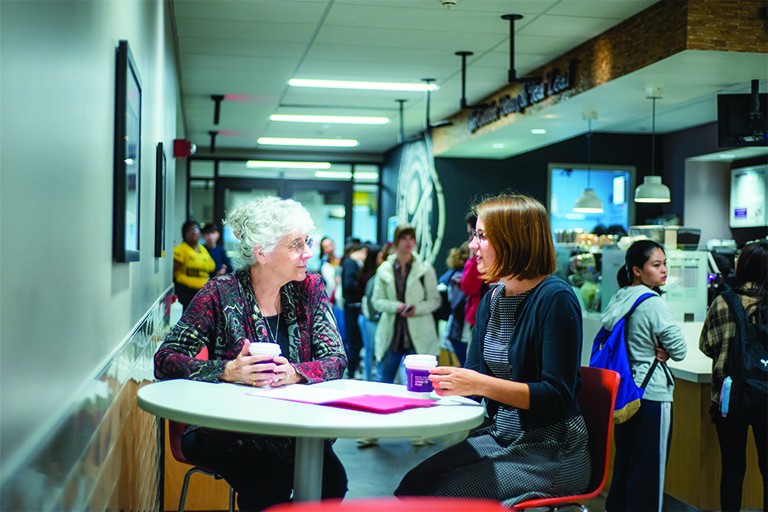
IU Libraries Strategic Plan Core Goal 4
Jo Burgess recalls her son Sam reading the encyclopedia for fun. “Sam loved books from the time he was tiny,” she said. “I wanted to honor that.” As Jo spoke with Kyra Triebold, recent graduate and winner of the 2018 Sam Burgess Undergraduate Research Award, she described her son, a young man lost too soon through a tragic 2006 accident.
“You don’t want that name, your child, to be forgotten,” Burgess said. As a long-time IU librarian, she was able to find a way to not only remember Sam, but also to encourage young people on the campus by funding an annual cash award celebrating excellent research.
In spring 2018, Triebold’s paper, “Theroux’s Mothballs: The Importance of Translators’ Archives” was nominated for recognition by IU professor Christoph Irmscher. In his recommendation, he stated that her work “reminds us that literary archives don’t ‘archive;’ instead, they reveal, disclose, provoke and stimulate.”
Still actively contributing to the fund, Burgess appreciates the continued impact of her gift, and the way previous winners have built on their undergraduate academic successes.
For the many friends of IU Libraries, it is the pervasive impact of libraries that inspire giving. Whether supporting new collection acquisition, Lilly Library rare book conservation, student scholarships, library places of connection, or endowed librarian positions, supporters recognize the powerful, intentional way libraries reach all students and scholars.
Winning the Burgess Award may have a lifelong impact on Triebold. While currently the managing editor of the Journal of Acupuncture and Oriental Medicine, Meridians, she tells Burgess she is thinking about a future in academic libraries. The now retired IU librarian could not be happier.
“Winning the Burgess Award really boosted my confidence and my ability to do research.”
—Kyra Triebold, 2018 graduate of Indiana University, and winner of the Sam Burgess Undergraduate Research AwardJo Burgess graciously shares this photo of her son, Sam Burgess, who is memorialized through her gifts to the Sam Burgess Undergraduate Research Award. First awarded in 2006, the Burgess Award encourages undergraduates to engage with IU Libraries’ exceptional primary sources.
Elizabeth Tanis, shown here with friend Rich Arehart, Dean Walters (left), and Lilly Library’s Erika Dowell (right), helped IU celebrate her family’s 2017 multigenerational gift, which included a future curator position at Lilly Library.
Collaborative classroom 138 in Herman B Wells Library has been rededicated as the Ronald L. and Mary Ann Bennett Room in recognition of IU Libraries’ commitment to innovative use of space and technology. The Bennetts, pictured here, named the room in recognition of our role in academic success for all students.
Inside the innovative Learning Commons, the newly named Everett W. Kunzelman Tutorial Room is a 24-hour, service-oriented consultation space, and host to IU’s Writing Tutorial Services program. Shown here, Kunzelman (center) and guests gather in celebration of his gift.
Building for Excellence
IU Libraries is proud of our heritage and iconic structures. We have been collecting and protecting the greatest ideas for 200 years. With multiple destinations throughout Indiana University Bloomington, we are home to modern and legacy collections critical to recruiting and retaining the best students, faculty, and researchers. As higher education evolves, so do our spaces. Use assessments and faculty consultations are just two examples of how library leaders engage with our communities to meet changing demands. Together, we ensure IU remains competitive in research and scholarship while providing a rich educational environment.
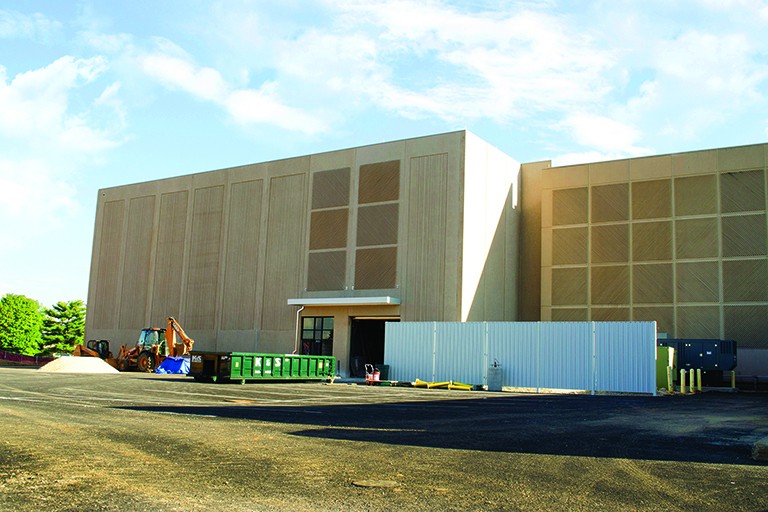
IU Libraries Strategic Plan Core Goal 5
Photographic plates from the Indiana Asteroid Program, a tree ring collection, and the treasures of the Eskenazi Museum of Art all currently serve the research and teaching missions of Indiana University from disparate campus locations. In additional venues, researchers examine the Moving Image Archive, the Elizabeth Sage Historic Costume Collection, the Black Film Center/Archives, the Archives of Traditional Music, and the Kinsey Collection, including fine art.
It’s something IU President Michael A. McRobbie called out in his 2017 State of the University address—IU has upwards of 50 special collections of material objects containing around 30 million individual objects. While historically stored within varying departments, President McRobbie saw a need to create an optimized, centralized facility to conserve these collections of distinction.
After a visit to current modules in the Auxiliary Library Facility building, it was clear IU Libraries was ready to take on the challenge of a unique, hybrid repository for objects. Plans for construction immediately commenced, resulting in a planned opening of a third module in early 2019. IU Libraries will then safeguard 89,721 square feet of one of the most modern and secure book and material item repositories in America—extending the life of collections inside by hundreds of years through optimal storage in one of five micro-climate environments.
Coming together physically is symbolic of a spirit on campus, said David Brennemen, Director of the Eskenazi Museum of Art. Appreciating IU Libraries and the critical need for trusted, behind-the-scenes infrastructure, he noted, “what brings it all to life is the collaborative programming being spearheaded by groups such as the Arts & Humanities Council. IU is a very, very rich research institution, and we are beginning to celebrate that together.”
“The leadership at Indiana University, especially from our President, has been very forward thinking about not just the art museum, but of all the collections and treasures."
—David Brenneman, Director of the Indiana University Eskenazi Museum of ArtIn 2017, the ninth floor of the Herman B Wells Library was renovated to create an inspiring home for books on art, art history, architecture, and design. A 2018 celebration included remarks by IU Bloomington Provost Lauren Robel.
The revitalized ninth floor has quickly become a favorite spot for students in all disciplines who appreciate an art-filled quiet study space.
At the Chemistry Building, scholars of math and all kinds of science investigate print collections and access librarian expertise at the Sciences Library, renovated in 2018.
Inside the revitalized Sciences Library, a new collaboration space will be used to engage faculty and students in new ways to leverage the breadth and depth of library collections and services.
Centrality of Information
The Indiana University strategic plan points out that access to data, information, and knowledge are already unprecedented in human history. A focus on excellence in the Centrality of Information leads IU Libraries to develop technology and expertise in dynamic information exchange. As co-directors of the Institute for Digital Arts & Humanities, we offer digital methods and pedagogy consulting. As co-developers of the Avalon Media System, we support large-scale media access at IU and across the country. As host of IU ScholarWorks, we securely hold and openly deliver scholarly materials in digital forms. These are just a few examples of the ways in which we actively participate in the Centrality of Information at IU.
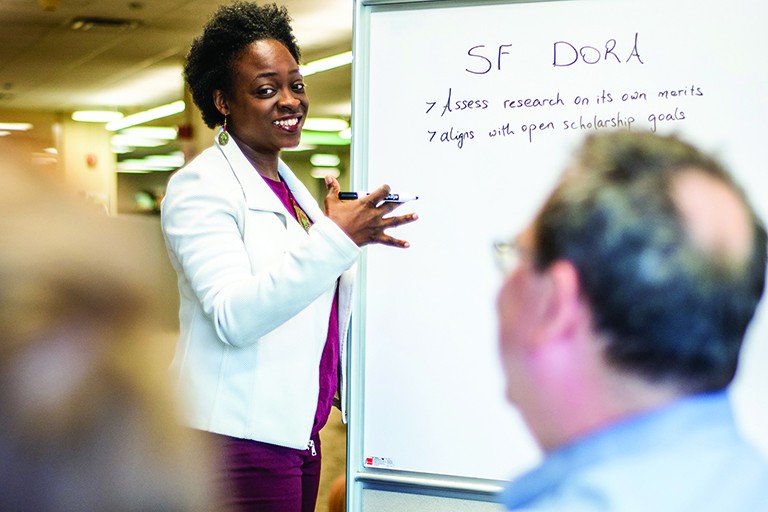
IU Libraries Strategic Plan Core Goal 6
Dismantling barriers to information access is central to the mission of the academic library. The rising cost of journal subscriptions puts research access at risk. At IU Libraries, we have been working on solutions to this problem for over a decade. One of the most prolific is our open scholarship services—facilitating IU-authored, scholarly work on the open web for anyone to read.
Today, IU ScholarWorks, developed and deployed by the Scholarly Communication department of IU Libraries, delivers 49 Open Access journals and serves as the repository for more than 8,000 deposited items.
In traditional academic publishing, a persistent lack of diversity in authorship is well documented and discussed. That led Scholarly Communication leaders to ask: What happens when research is liberated and cost barriers removed? Can open access publishing offer a new environment of inclusion?
As the new Open Scholarship Resident, Willa Liburd Tavernier intends to find out. Charged with assessment and outreach of the current ScholarWorks inventory, Liburd Tavernier believes the two go hand in hand. “We don’t have information right now in terms of a profile of whom is left out. Once I do the assessment, then my outreach becomes very targeted to encouraging those gaps to be filled,” she explained.
Library leaders participating in the Association of College and Research Libraries (ACRL) Diversity Alliance are committed to opening doors, sharing their networks, and preparing residents for success. As part of its diversity plan implementation, IU Libraries joined the Alliance in 2017 and in 2018 recruited Liburd Tavernier with a highly strategic, well-defined resident position.
“I want to reach out to underrepresented groups and help form a more inclusive publishing space through open access. I want to create spaces in the same way that space was created for me.”
—Willa Liburd Tavernier, IU Libraries ACRL Diversity Resident, Open ScholarshipLiburd Tavernier is impressed by her welcome to IU. She appreciated attending the IU Fall Faculty Picnic with her new Scholarly Communication colleagues, where she was surprised to learn IU Provost Lauren Robel gladly snaps family photos.
Digitizing paper collections makes them more centrally available. From the Modern Political Papers Collection, the Iraq Study Group Papers of former U.S. Rep. Lee Hamilton (pictured here in 2006 with President George W. Bush) are now available digitally.
IU Libraries and UITS sponsored a day-long symposium, Driving Student Success through Affordable Course Material. The symposium explored the connection between course material costs and student success, progression, and retention, and featured three experts from the University of Wisconsin-Madison.
The Institute for Digital Arts and Humanities (IDAH) is a hub for digital arts and humanities located in the Herman B Wells Library. Michelle Dalmau (far right), co-director and Head of Digital Collections Services for IU Libraries, is pictured here with colleagues in consultation.
IU Libraries At-a-Glance
Publication Details
This 2016–2018 annual report is published by IU Libraries Office of Communications in partnership with Carolyn Walters, Ruth Lilly Dean of University Libraries.
Editor: Michelle Ann Crowe Director of Communications
Designer: Abigail Godwin Graphic Designer
Photography: IU Communications, Noel Photos, Ouriel Morgensztern Photography, Abigail Godwin, Kate L’Heureux, Hudson Photography, Michelle Crowe, and many more.
Special thanks to: Gary Dunham, Director of IU Press and Digital Publishing, and Christine Wagner, Administrative Secretary, for copyediting.
IU Libraries shares our gratitude to all of those in the Indiana University community who offered their voice to this publication.
Thank you for helping us amplify our impact.
Location:

